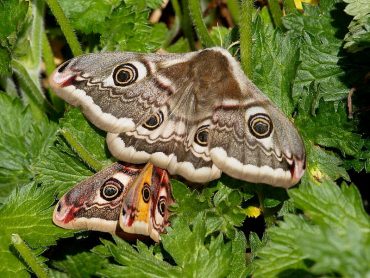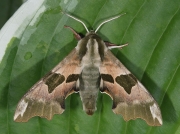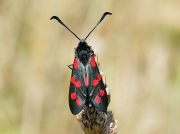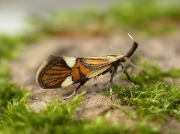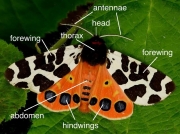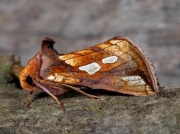The Clifden Nonpareil Moth
In the UK the Clifden Nonpareil, also known as the Blue Underwing, is a transitory resident in the south and south east of England and an annual migrant in small numbers from Europe, mainly along the east and south coasts.
The species is widespread in deciduous woodland across much of continental Europe containing the larval foodplant of Aspen, Populus tremula, and other species of poplar, Populus sp.
The moth flies in a single generation between July and October when they are attracted to light and sugary substances.
The Clifden Nonpareil moths featured were reared from eggs laid by a migratory female attracted to light on the Lizard Peninsular, by John Foster. The species isn’t resident in Cornwall but with increasing numbers being recorded in recent years the likelihood of it establishing itself, as in the other parts of the UK, is increasing.
Identification of the Clifden Nonpareil
Largest specimens have a wing span of almost 100mm.
A startling blue band across the black underwings is revealed when agitated or preparing for flight
The grey forewings are beautifully marked with a series of subtle wavy lines and speckles. The small, mid forewing, pale patch is a diagnostic feature.
The caterpillar of the Clifden Nonpareil
The caterpillars of the Clifden Nonpareil grow to 80 mm in length. The first two pairs of prolegs on segments 6 and 7 are less well developed, spiracles are dark brown, a slight dorsal hump on the 8th segment has a band of darker freckling and there is a thin skirting of pale hairs. Other instars are shown below.
The caterpillars spend much of the time at rest, aligned along the woody stems of the larval foodplant where they are surprisingly well camouflaged.
Butterfly caterpillar galleries
Foodplant of the Clifden Nonpareil
In the UK, Aspen Populus tremula is considered to be the main foodplant. Those larvae featured were reared on Black Poplar Populus nigra which is one of several species of Populus recorded as foodplants in other parts of Europe.
Life cycle of the Clifden Nonpareil Moth
The eggs, larvae and cocoon featured were from a single brood reared from eggs laid by a migrant moth attracted to light by John Foster. Eggs were overwintered in a cold outhouse and brought into an unheated room in March.
The overwintering eggs are laid on the stems and surrounding bark of the foodplant.
In late April the eggs begin to hatch.
The caterpillars are extremely active and soon disperse. When reared in captivity the larvae should be seperated quickly to prevent cannibalism. Although this was not witnessed, larvae disappeared without trace overnight when several were kept in too close a confinement. When isolated, numbers remained stable.
Early instars are pale green, browner in the penultimate moult and a light, greeny grey in the final instar. Once over the early dispersal the caterpillars become extremely lethargic and lie along the woody stems of the foodplant for most of the day.
In captivity the first larva to hatch pupated in 57 days. In warmer climates this development time is likely to be reduced.
Pupating Clifden Nonpareil caterpillars
Pupation takes place inside a cocoon of leaves spun together on the larval foodplant. In this case is was fresh Black Poplar leaves but in the wild it is more commonly Aspen – Populus genus. The emergence of adult moths was staggered between 30 – 45 days.
Recommended moth and caterpillar reference books.
Provisional Atlas of UK’s Larger moths – Hill, Randle and Parsons.
Field Guide to the Moths of Great Britain and Ireland – Waring, Townsend and Lewington.
Colour identification guide to caterpillars of the British Isles – Jim Porter
